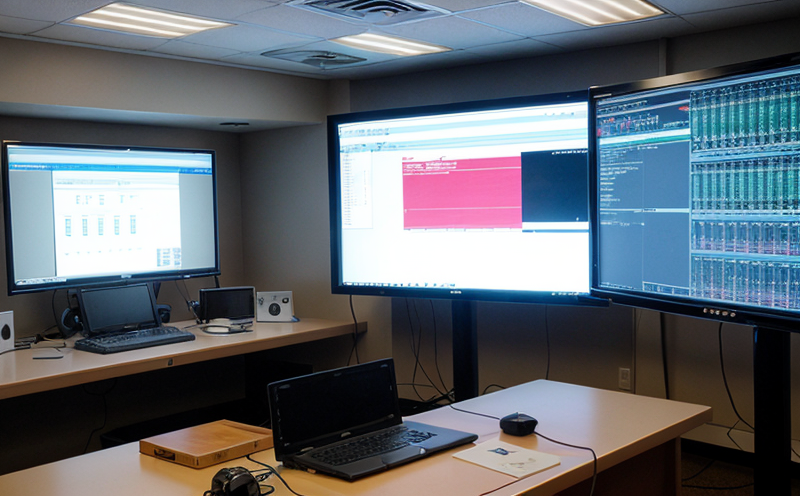EN 50121 Electromagnetic Compatibility Testing of Signaling Devices
The EN 50121 series of standards is crucial in ensuring the electromagnetic compatibility (EMC) of signaling devices used in railway and transportation systems. These devices are essential for the safe operation of trains, as they control signals and manage traffic flow. Ensuring these devices meet the EMC requirements defined by ISO 18163 and EN 50121-1, among others, guarantees that the signaling systems will operate reliably without interference from other electronic devices.
The testing process for EN 50121 involves several stages, including type testing and production tests. During type testing, the system undergoes a series of environmental stress tests to simulate real-world conditions such as temperature variations, humidity, and mechanical shocks. This ensures that the signaling device can withstand these stresses without compromising its performance.
Production tests are conducted on individual units after they have passed the type test. These tests verify that each unit meets the specified EMC requirements consistently. The tests include both emissions testing (to ensure the device does not interfere with other equipment) and immunity testing (to ensure the device can operate correctly in an environment full of electromagnetic interference).
Compliance with EN 50121 is essential for railway operators to meet regulatory requirements, such as those set out by European Union Railway Directive. By ensuring that the signaling devices comply with these standards, railways can minimize the risk of malfunctions and accidents caused by electromagnetic interference. This not only enhances safety but also improves efficiency in traffic management.
The testing process is critical for railway systems because any failure in the signaling system could lead to dangerous situations, such as train collisions or derailments. By adhering strictly to the EMC requirements outlined in EN 50121, railways can ensure that their signaling devices function reliably under all conditions.
Our state-of-the-art facilities are equipped with the latest equipment and software to conduct these tests accurately and efficiently. Our team of expert engineers ensures that every step of the testing process adheres strictly to international standards. This not only guarantees accurate test results but also helps our clients meet regulatory requirements confidently.
Applied Standards
The primary standard applied in this service is EN 50121-1:2016, which specifies the EMC requirements for signaling devices used in railway systems. Compliance with these standards ensures that the devices meet the necessary environmental and operational conditions, thereby enhancing their reliability and safety.
- EN 50121-1:2016 defines the electromagnetic compatibility of signaling devices in railway applications.
- ISO/IEC 17025: Our laboratory is accredited to this standard, ensuring that our testing processes meet international quality and technical standards.
Eurolab Advantages
At Eurolab, we offer comprehensive EMC testing services tailored specifically for the railway industry. Our expertise in this sector allows us to provide accurate, reliable, and efficient testing that meets all relevant international standards.
- Accredited Laboratory: We are ISO/IEC 17025 accredited, ensuring our tests meet the highest quality and technical standards.
- Comprehensive Testing Capabilities: Our state-of-the-art facilities can handle a wide range of signaling devices, from small components to large systems.
- Expertise in Railway EMC: With years of experience in testing railway signaling systems, our team has the knowledge and skills to provide accurate assessments.
- Compliance with International Standards: We ensure that all tests comply with international standards such as EN 50121-1:2016 and ISO/IEC 17025.
Environmental and Sustainability Contributions
Compliance with EN 50121 not only ensures the safety of railway operations but also contributes positively to environmental sustainability. By minimizing the risk of accidents caused by electromagnetic interference, railways can operate more efficiently, reducing fuel consumption and emissions.
- Emission Reduction: Reliable signaling systems ensure that trains run on time, which reduces idling and thus lowers fuel consumption and greenhouse gas emissions.
- Resource Efficiency: By preventing malfunctions, railways can optimize their operations, leading to more efficient use of resources such as power and materials.
The testing process at Eurolab is also environmentally friendly. We use advanced technology that minimizes the environmental impact while ensuring accurate results. This commitment to sustainability aligns with our clients' goals for responsible business practices.





